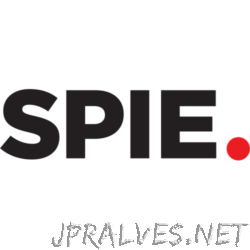Other

“Tiled titanium:sapphire laser amplification promises to enhance the experimental capability of ultra-intense ultrashort lasers for strong-field laser physics Ultra-intense ultrashort lasers have a wide-ranging scope of applications, encompassing basic physics, national security, industrial service, and health care. In basic …

“Researchers develop a computer from an array of VCSELs with optical feedback In our data-driven era, solving complex problems efficiently is crucial. However, traditional computers often struggle with this task when dealing with a large number of interacting variables, leading …

“Breakthrough in chip-scale integration for next-gen applications unlocks the power of photonic integration for compact, affordable, and high-performing devices. In the realm of photonics, the integration of multiple optical devices onto a single substrate holds immense promise for a wide …

“Using an ultrafast laser direct writing method, researchers arrange 3D voxels in glass to precisely direct light for various applications Modern-day technologies like optical computing, integrated photonics, and digital holography require light signals to be manipulated in three dimensions. To …

“Artificial intelligence assists quantum metrology for greater efficiency with an innovative model-free learning algorithm Quantum sensing represents one of the most promising applications of quantum technologies, with the aim of using quantum resources to improve measurement sensitivity. In particular, sensing …

“Rapid crystallization method enables high-performance and spectrally stable deep-blue perovskite LEDs The deep blue of your LED display is likely produced by indium gallium nitride (InGaN), a costly substance. In the field of LEDs, researchers are seeking alternatives in a …

“Unipolar quantum optoelectronic devices show potential for fast, long-range optical links that are also resistant to adverse weather conditions. Telecommunications have reshaped many aspects of our lives over the past few decades by providing incredibly convenient ways to share and …

“Thin-film lithium niobate edge coupler enables on-chip second harmonic generation. Thin-film lithium niobate (TFLN) has recently emerged as a versatile nanophotonic platform. With the advantages of high optical confinement, enhanced light–matter interaction, and flexible dispersion control, TFLN-based periodically …

“A new wearable helmet-shaped device monitors brain activity Recent advances in brain imaging techniques facilitate accurate, high-resolution observations of the brain and its functions. For example, functional near-infrared spectroscopy (fNIRS) is a widely used noninvasive imaging technique that employs near-infrared …
“Researchers resolve a long-standing challenge in quantum optics: optimal Bell-state measurement of time-bin encoded qubits, to enhance the key rate of secure quantum communication Integrated quantum photonics (IQP) is a promising platform for realizing scalable and practical quantum information processing …

